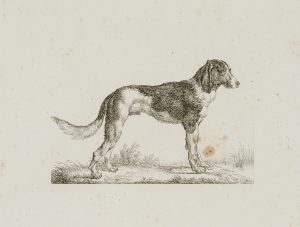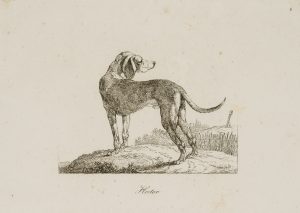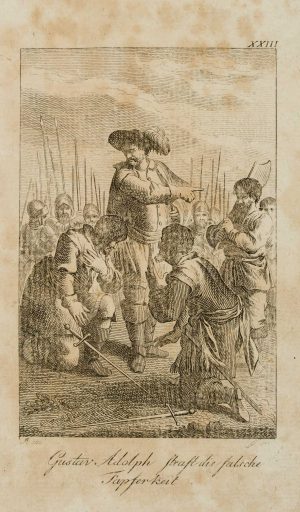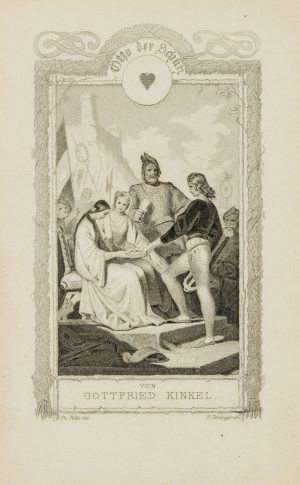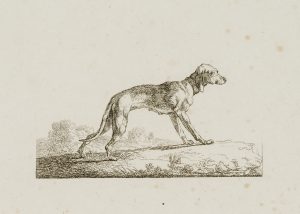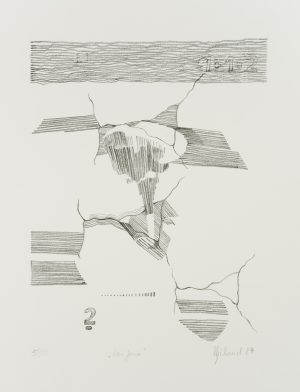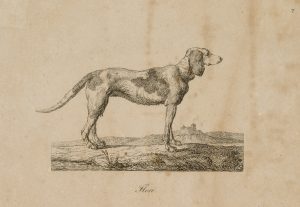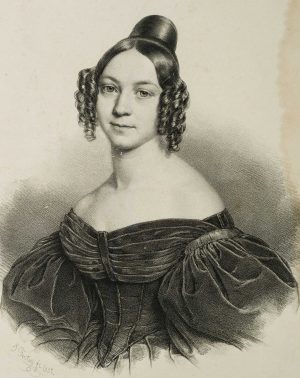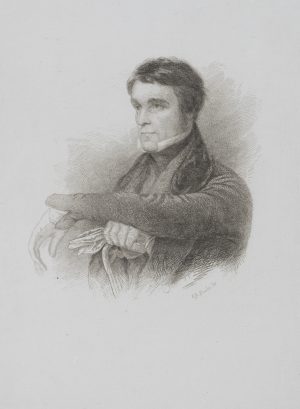Johannes Eissenhardt (1824 Frankfurt am Main – 1896 ebd.) nach Edward Jakob von Steinle (1810 Wien – 1886 Frankfurt am Main), Mater Dolorosa, Schmerzensmutter Maria, Mariengebet, 19. Jahrhundert, Stahlstich
- Technik: Stahlstich auf Papier
- Stempel: Sammlerstempel, Lugt Nr.: 1367. Heinrich Stiebel (1851-1928). Frankfurt am Main. 19. Jahrhundert
- Datierung: 19. Jahrhundert
- Beschreibung: Unter der Darstellung signiert “Prof. E. Steinle del. / Felsing imp. / J. Eissenhardt radirt.”, unter der Darstellung bezeichnet “O Maria, unbefleckte Jungfrau und schmerzhafte Mutter, empfehle unsere Kinder dem anbetungswürdigen Herzen Jesu, der seiner Mutter nichts abschlägt, bitte für sie!”. Mit Darstellungen u.a. des Heiligen Johannes, Aloisius, Augustinus und der Heiligen Monica und Elisabeth.
Edward von Steinle war ein österreichischer Maler des 19. Jahrhunderts, Schüler der Akademie der bildenden Künste in Wien und hielt sich von 1828 bis 1834 in Rom auf, wo er mit Friedrich Overbeck und Philipp Veit verkehrte; 1850 erster Professor am Städelschen Institut. Er schuf zahlreiche meist religiöse Staffeleibilder aber auch Porträts und romantisch gehaltene Genrebilder. Er schuf eine große Anzahl von Zeichnungen und Aquarellen, die meist einen romantischen Zug haben, den er durch den Verkehr mit Clemens Brentano angenommen hatte.
Johannes Eissenhardt war von 1839 bis 1846 Schüler des Städelschen Instituts unter E.E. Schaeffer; er gehörte zu dem Kreis um Jakob von STEINLE und Johann VEITH, wie seine frühen Arbeiten zeigen; Aufenthalte in Darmstadt und Russland (St. Petersburg); seit 1873 hatte Eissenhardt sein Atelier im Städelschen Institut und war bis 1889 dort auch als Lehrer tätig; in den letzten Lebensjahren betätigte er sich auch als Maler; sein graphisches Oeuvre ist fast vollständig im Städelschen Institut vorhanden; sein Bildnis malte außer A. Göbel auch Hans Thoma. - Schlagworte: Religiös, Deutschland, Romantik, 1800-1849
- Größe: 29,4 cm x 19,8 cm, Druckplatte: 18,7 cm x 15,0 cm, Darstellung: 14,8 cm x 8,7 cm
- Zustand: Sehr guter Zustand. Vereinzelt sind blasse Stockflecken erkennbar. Auf dem Blattrand sind zudem leichte Lichtschäden sichtbar.
English Version:
Johannes Eissenhardt (1824 Frankfurt on the Main – 1896 ibid.) after Edward Jakob von Steinle (1810 Vienna – 1886 Frankfurt on the Main), Mater Dolorosa, Mother of Sorrows Mary, Marian prayer, 19th century, Steel engraving
- Technique: Steel engraving on Paper
- Stamp: Collector’s stamp, Lugt no.: 1367. Heinrich Stiebel (1851-1928). Frankfurt on the Main. 19th century
- Date: 19th century
- Description: Signed below the depiction “Prof. E. Steinle del. / Felsing imp. / J. Eissenhardt radirt.”, inscribed below the depiction “O Mary, immaculate Virgin and sorrowful Mother, commend our children to the adorable heart of Jesus, who denies nothing to his mother, pray for them!”. With depictions of St John, Aloisius, Augustine and St Monica and St Elisabeth, among others.
Edward von Steinle was a 19th-century Austrian painter, a student at the Academy of Fine Arts in Vienna, and stayed in Rome from 1828 to 1834, where he associated with Friedrich Overbeck and Philipp Veit; first professor at the Städel Institute in 1850. He created numerous mostly religious easel paintings but also portraits and romantic genre paintings. He created a large number of drawings and watercolours, most of them with a romantic touch, which he had adopted through his intercourse with Clemens Brentano.
Johannes Eissenhardt was a pupil of the Städel Institute under E.E. Schaeffer from 1839 to 1846; he belonged to the circle around Jakob von STEINLE and Johann VEITH, as his early works show; stays in Darmstadt and Russia (St. Petersburg); since 1873 Eissenhardt had his studio in the Städelsches Institut and was also active there as a teacher until 1889; in the last years of his life he also worked as a painter; his graphic oeuvre is almost complete in the Städelsches Institut; his portrait was painted not only by A. Göbel but also by Hans Thoma. - Keywords: 19th century, Romanticism, Religious, Germany,
- Size: 29,4 cm x 19,8 cm (11,6 x 7,8 in), Plate: 18,7 cm x 15,0 cm (7,4 x 5,9 in), Depiction: 14,8 cm x 8,7 cm (5,8 x 3,4 in)
- Condition: Very good condition. Pale foxing spots are visible in isolated places. Light light damage is also visible on the sheet margin.





